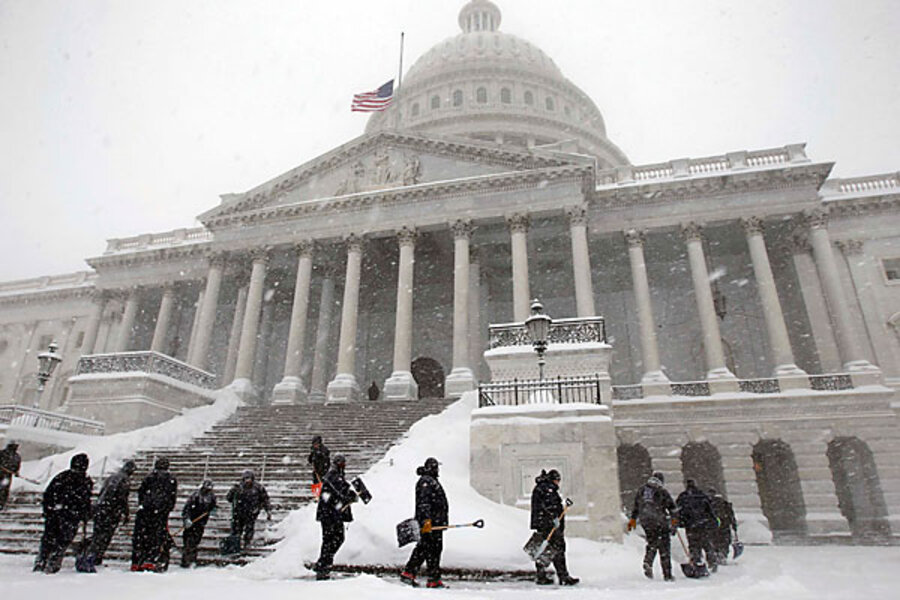What does it mean when the federal government shuts down?
Loading...
Awe-inspiring winter weather could lead to a record shutdown of the federal government, costing taxpayers upward of half a billion dollars.
So far, a series of storms – snowmaggedon, the snowpocalpyse, snowoverkill, snownotorious big – has closed Washington’s federal agencies for 3-1/2 days. With flakes falling fast and furious on Wednesday afternoon, a longer snowcation for the area’s 230,000 bureaucrats seemed possible, even likely.
The Office of Personnel Management’s director, John Berry, says each day costs about $100 million in lost wages and productivity. That makes the tab $350 million so far, and rising.
[Editor's note: The original version of this story misstated the total number of dollars lost each day of a federal shutdown.]
The longest weather-related shutdown of the government was in 1996 and lasted a week. That mark seems within reach.
“The snow has just been relentless,” said D.C. Fire Chief Dennis Rubin. “It doesn’t seem like we’re getting much of a break.”
But here’s a question: Does this mean the federal government is falling apart? Will taxes go uncollected, fighter aircraft unpurchased, and Social Security checks unmailed due to the inability of D.C. residents to leave their homes?
Um, not really. For one thing, no government shutdown is total. Officially designated emergency employees have to report for work anyway. So those checks can go rolling along.
“There are no standard definitions or categories in this regard, and agency heads … are free to make such determinations based on the agency’s unique mission requirements and/or circumstances,” says OPM’s manual for Washington-area closures.
And there is always working from home. About 9 percent of eligible federal workers have official telework policies that allow them to telecommute.
Asked whether she was working, or shoveling, one federal attorney had a one-word answer: “both.”
Martha Johnson, newly approved by the Senate as head of the General Services Administration, was sworn in by phone this week so she could take the reins of her agency as soon as possible.
The longest government shutdown ever lasted from Dec. 16, 1995, to Jan. 6, 1996. It was caused by the failure of then-President Clinton and GOP leaders in Congress to agree on funding measures.
That shutdown cut off pay for furloughed workers and extended to federal employees all across the country. Its effects were extensive.
Toxic waste cleanup at 609 sites stopped, for instance, according to a Congressional Research Service report on the shutdown’s effects.
The hiring of 400 border patrol agents was delayed. Pursuit of delinquent child support cases was suspended. Some 200,000 passport applications went unprocessed. The furlough of Department of Interior Bureau of Indian Affairs employees delayed general assistance payments to some native American recipients.
Associated Press material was used in this report.
Follow us on Twitter.





